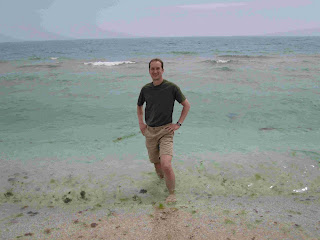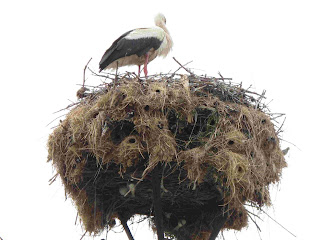Istanbul (June 1-3)
The next day we headed into the city of Istanbul. A Dutch couple we met the night before at our campground suggested that we do what they did and leave our car at the campground, take public transportation and stay overnight in Istanbul since the commute takes many hours. We followed their suggestion and were glad. After two different buses and a tram winding through packed streets, we finally arrived in the center of Istanbul 3.5 hours later. We checked into Hotel Ararat in the Sultanahmet district. This area is “Old Istanbul” and is designated a Unesco World Heritage site. It was a perfect location to stay since the majority of sights are located here. As a bonus, our hotel had an incredible view of one of the main sights, the Blue Mosque, from its lovely rooftop terrace.
Breakfast at Hotel Ararat
One of our main things to do in Istanbul was to pick up our visas for Iran at the Iranian Consulate, so after checking into the hotel we headed straight to the consulate where we left our passports and were told to return the next morning. With the rest of the day ahead of us, I decided to visit one of the famous sites, Aya Sofya. This building was built as a church by Emperor Justinian in 537 AD and it reigned as the greatest church in the Christian world until the Ottoman Conquest in 1453 when Mehmet the Conqueror had it converted into a mosque. It remained a mosque until 1935 when Ataturk, the father of modern Turkey, made it a museum.
Aya Sofya
Inside Aya Sofya
In the evening, Stani and I visited the Blue Mosque. It’s impressive from the outside but even more breathtaking from the inside with its blue tiles numbering in the tens of thousands, hundreds of windows and huge central prayer space. This mosque was built between 1606-1616 to rival and even surpass Aya Sofya in grandeur and beauty. We find the mosque truly breathtaking. Afterwards we walked through a bazaar with shops selling plates, tiles, carpets, hanging lanterns and other Turkish goods and on to a street filled with restaurants and cafes. We found a nice restaurant and ate dinner on the rooftop terrace with a great view of the Blue Mosque on one side and the Sea of Marmara on the other.
Ceiling of Blue Mosque
Blue Mosque from rooftop restaurant
Ezan (Call to prayer) from Blue Mosque
The next morning we went to the Iranian Consulate and waiting for us were our passports, visas for Iran and a plate full of cookies. We happily accepted two cookies and were on our way to see more of Istanbul. Topkapi Palace was our first stop. The palace of the Ottoman sultans from 1453-1839 is definitely a must see! There are four courtyards, ornate buildings and exhibits of costumes, weapons and gifts given by other countries which all give a glimpse of the lavish lifestyles of the sultans.
Imperial Council Chamber within Topkapi Palace
Young boys dressed up for a ritual of passage ceremony
The highlight of the palace, architecturally speaking, is visiting the harem. Because there is an additional admission price, the crowds thin out significantly which was a welcome relief. This area was the private living area of the sultan, his wives, concubines, other family members and eunuch servants. I can only imagine that living in such a place would be a daily soap opera, but Harem life on the other hand was governed by tradition, obligation and ceremony. Interestingly the word harem really just means private.
Sultan Murat III's private chamber inside the Harem
After the palace we stopped for a quick lunch of pide (Turkish pizza) and then walked to the Galata Bridge with views of the Golden Horn on one side and the Bosphorus Strait on the other. The Bosphorus divides European Istanbul (the West) from Asian Istanbul (the East). In the early evening we headed back by public transport to our campground, this time it took us only 3 hours to get back. When we put our heads down at the end of the day, we were exhausted but full of good feelings for having the opportunity to be able to experience such an incredible city as Istanbul with its kind people, history and beauty.
View of the Bosphorus from Galata Bridge

































